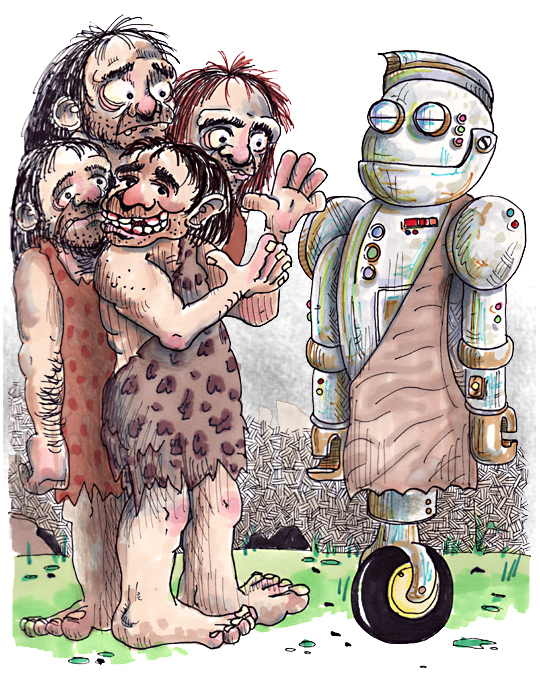Did big-brained human geniuses live many millennia ago? Discover magazine explores:
Perhaps the Boskops were trapped by their ability to see clearly where things would head. Perhaps they were prisoners of those majestic brains.
There is another, again poignant, possible explanation for the disappearance of the big-brained people. Maybe all that thoughtfulness was of no particular survival value in 10,000 B.C. The great genius of civilization is that it allows individuals to store memory and operating rules outside of their brains, in the world that surrounds them. The human brain is a sort of central processing unit operating on multiple memory disks, some stored in the head, some in the culture. Lacking the external hard drive of a literate society, the Boskops were unable to exploit the vast potential locked up in their expanded cortex. They were born just a few millennia too soon.
In any event, Boskops are gone, and the more we learn about them, the more we miss them. Their demise is likely to have been gradual. A big skull was not conducive to easy births, and thus a within-group pressure toward smaller heads was probably always present, as it still is in present-day humans, who have an unusually high infant mortality rate due to big-headed babies. This pressure, together with possible interbreeding with migrating groups of smaller-brained peoples, may have led to a gradual decrease in the frequency of the Boskop genes in the growing population of what is now South Africa.
Then again, as is all too evident, human history has often been a history of savagery. Genocide and oppression seem primitive, whereas modern institutions from schools to hospices seem enlightened. Surely, we like to think, our future portends more of the latter than the former. If learning and gentility are signs of civilization, perhaps our almost-big brains are straining against their residual atavism, struggling to expand. Perhaps the preternaturally civilized Boskops had no chance against our barbarous ancestors, but could be leaders of society if they were among us today.
Maybe traces of Boskops, and their unusual nature, linger on in isolated corners of the world. Physical anthropologists report that Boskop features still occasionally pop up in living populations of Bushmen, raising the possibility that the last of the race may have walked the dusty Transvaal in the not-too-distant past. Some genes stay around in a population, or mix themselves into surrounding populations via interbreeding. The genes may remain on the periphery, neither becoming widely fixed in the population at large nor being entirely eliminated from the gene pool.
Just about 100 miles from the original Boskop discovery site, further excavations were once carried out by Frederick FitzSimons. He knew what he had discovered and was eagerly seeking more of these skulls.
At his new dig site, FitzSimons came across a remarkable piece of construction. The site had been at one time a communal living center, perhaps tens of thousands of years ago. There were many collected rocks, leftover bones, and some casually interred skeletons of normal-looking humans. But to one side of the site, in a clearing, was a single, carefully constructed tomb, built for a single occupant—perhaps the tomb of a leader or of a revered wise man. His remains had been positioned to face the rising sun. In repose, he appeared unremarkable in every regard...except for a giant skull.




No comments:
Post a Comment